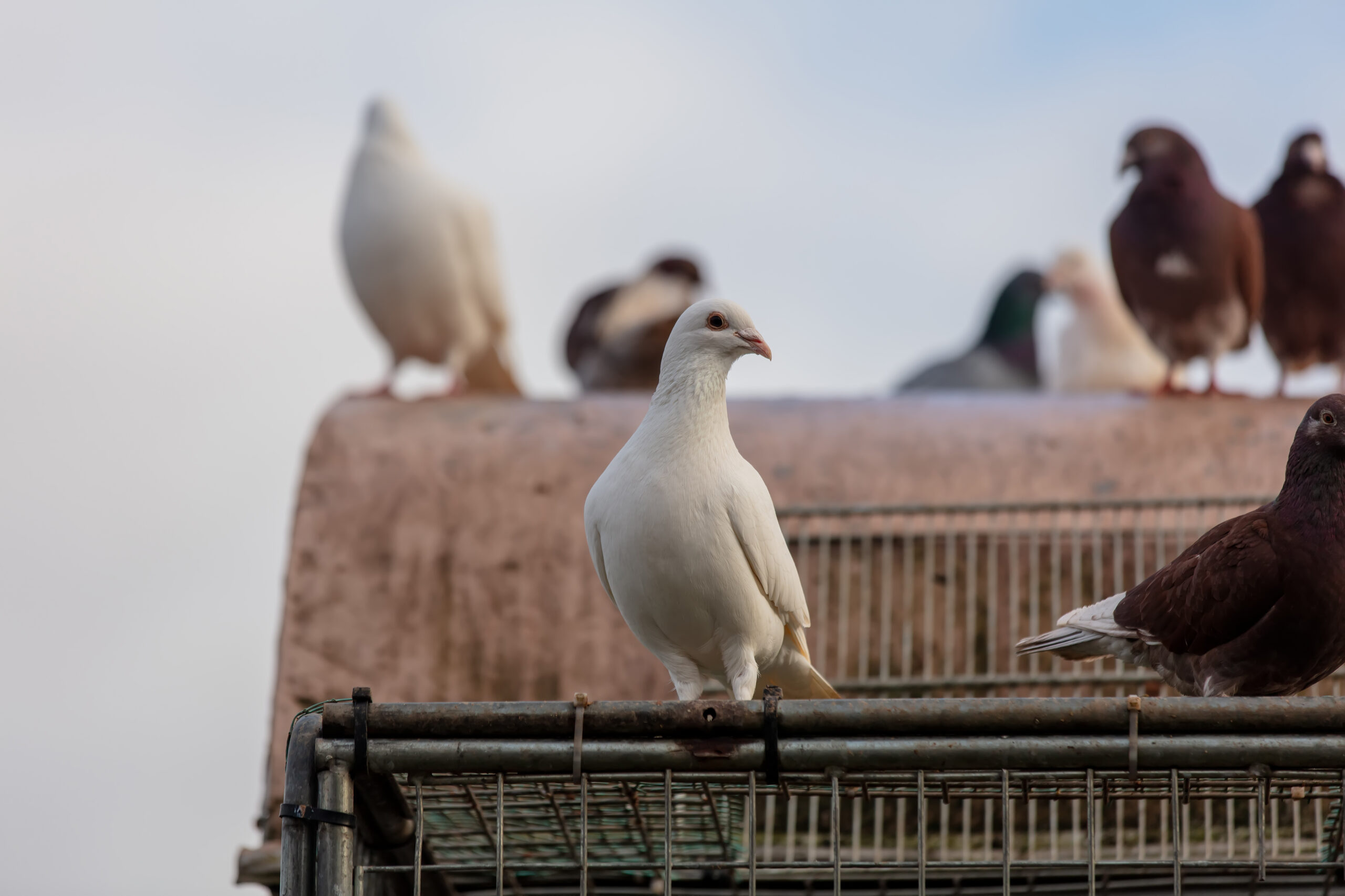WASHINGTON (THE WASHINGTON POST) – Internet speeds have come a long way since the days of the dial-up modem, but sometimes you can’t beat the millennia-old method of carrier pigeon.
Ancient Greeks used the so-called rats of the sky to spread results of the Olympic Games. In 1850, Reuters used a fleet of 45 pigeons to send news and stock prices 75 miles between Brussels and Aachen, Germany. The trip took two hours. (A train would have taken six.) The US Army also boasted its own fleet of carrier pigeons, sending 600 to France during World War I.
Racing pigeons clock an average of 40 miles per hour and typically race up to 400 miles, roughly from Washington, DC, to Boston, according to the American Racing Pigeon Union. With the boost of a tailwind, pigeons have been recorded going as fast as 110 mph and as far as 1,000 miles.
At certain data volumes and distances, the pigeon is a quicker option for large swaths of rural America, where internet speeds can lag far behind the national average.
Whether a pigeon can best the internet depends on three things: internet speed, distance and data.
It doesn’t make a difference online whether you’re sending a file across town to your neighbour or best friend across the country. It’s the size of data being sent that slows the internet down. The longer the journey, the bigger the data needs to be for the bird to out-fly broadband.
Although many Americans have high-speed internet, in rural areas the internet can be spotty and slow. In 2020, nearly 1 in 5 rural residents lacked access to download speeds of at least 25 megabits per second (or Mbps) and upload speeds above 3 Mbps, the definition for high-speed broadband set by the Federal Communications Commission in 2015.
Internet speeds below that threshold can support regular web browsing, email and standard-definition video streaming for up to two users, but not more people or intensive tasks, such as 4K video streaming or using complex cloud-based software.
The FCC is considering raising these benchmarks to 100 Mbps for download and 20 Mbps for upload speeds, which some internet access advocates say more accurately reflect the needs of modern internet users.
Rural-urban and rich-poor divides in internet quality persist because of uneven investment, according to Alex Kelley, head of broadband consulting at the Centre on Rural Innovation.
Internet service providers “will invest in the best technology in areas where there are competitive environments, and they will invest in the latest technology in wealthier areas,” Kelley said.

To get around this, state and municipal governments in some rural areas have eschewed large providers. North Dakota residents have some of the fastest internet in the country because of small local internet cooperatives and companies.
In some communities, median upload speeds are as low as 1 Mbps. At that rate, even daily tasks – such as sending a video across town – may be slower than a pigeon. In contrast, residents of some cities experience upload speeds faster than 100 Mbps.
The daily inefficiencies that come with slower internet can add up to lagging economic growth or increased unemployment as reliance on the digital economy grows, Kelley says.
Even in areas with high-speed internet, pigeons can – and have – beat the internet with large-enough data. Earlier this year, YouTuber and software developer Jeff Geerling strapped 3 terabytes’ worth of flash drives onto a pigeon. (He made sure to wrap them in a plastic bag: “If the bird poops, you don’t want to lose your data.”) The pigeon won against his super-fast gigabit fibre internet.
Of course, the petite pigeon can carry just a couple of ounces, is not immune to avian pandemic and can’t fly forever.
“You can’t make absolutes with pigeons because sometimes they stop off for food and sometimes they get drinks,” Geerling said. “And you never know if one falls in love and never makes it.”
When companies like Amazon and Google need to move large amounts of data, they turn to a more reliable form of transportation: trucks.
In 2016, Amazon launched AWS Snowmobile, a shipping container that can hold up to 100 petabytes of data – that’s 20 billion iPhone photos. Even with very fast internet speeds, 100 petabytes would take decades to upload to the internet. Trucking that data across the country would take only a matter of days.
Maxar, a satellite imagery company, was the first to use AWS Snowmobile in 2017, transporting its then 16-year archive of high-resolution imagery to the cloud with a truck and making it more readily accessible for military, government and media use.
Nearly a century before Maxar began collecting bird’s-eye imagery, that was another job for the pigeon. In the early 1900s, the pigeon camera was developed to capture photos from the sky. So if you do send your next flash drive of data via pigeon, consider adding a camera, too.







